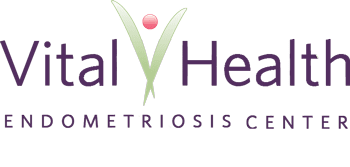To really understand the issue of endometriosis and ovarian cancer we need to keep several things in perspective, including the following:
- does the information in a scientific study apply to you as an individual
- how good is the data and what are the shortcomings
- what is actual risk of the situation affecting you
- what is the actual change in the risk for any given factor
- what can you do to change or reduce the risk in question
In the following paragraphs I use the example of what scientific studies tell us about how consuming dairy products affects the risk of developing ovarian cancer.
For example, a journalist could correctly state that scientists have shown dairy consumption increases by 100% the risk of a woman developing ovarian cancer. Relative risk (RR) is a statistical term used to quantify the amount of increased (or decreased) risk in comparison to the baseline level. Twice as many people will develop the disease with a relative risk of 2.0. A 2004 study found that high consumption of whole cows milk did have an RR of 2.0 and thus this statement is correct.
The article also stated that lower consumption of whole milk did not show the same risk. So based this information a woman who only uses milk on her cereal in the morning is not increasing her risk of ovarian cancer. But if she stopped eating her morning cereal with milk basing her decision on this news report, she would be changing her life on information that did not apply to her.
In addition, another larger study in 2005 reviewed over 20 articles evaluating the risk of ovarian cancer as it related to dairy consumption (including the 2004 article). It does seem that high whole milk consumption increases the risk of developing ovarian cancer but only by 25% (average relative risk = 1.25)
The risk of ovarian cancer as it related to overall dairy consumption was slightly increased (RR = 1.17), with yogurt consumption slightly increased (RR =1.13) but skim/ low-fat milk did not show an increased risk (RR = 0.94) nor did the consumption of cheese have an increased risk (RR = 0.95).
From these studies, the accurate message is low/fat skim milk and cheese do not seem to increase the risk of developing ovarian cancer, while whole milk and yogurt demonstrate a small increase in risk. In other words a news piece on dairy increasing doubling the risk of ovarian cancer would falsely create worry and concern in the woman who has a bowl of cereal in the morning and perhaps eliminated something from her life that she not need to (endo does that enough on its own, we don’t need to unnecessarily add to it). Next time I will get into the discussion of what we know about ovarian cancer and how it is not one disease but in reality many different diseases, with different causes, prognosis, and outcomes.





